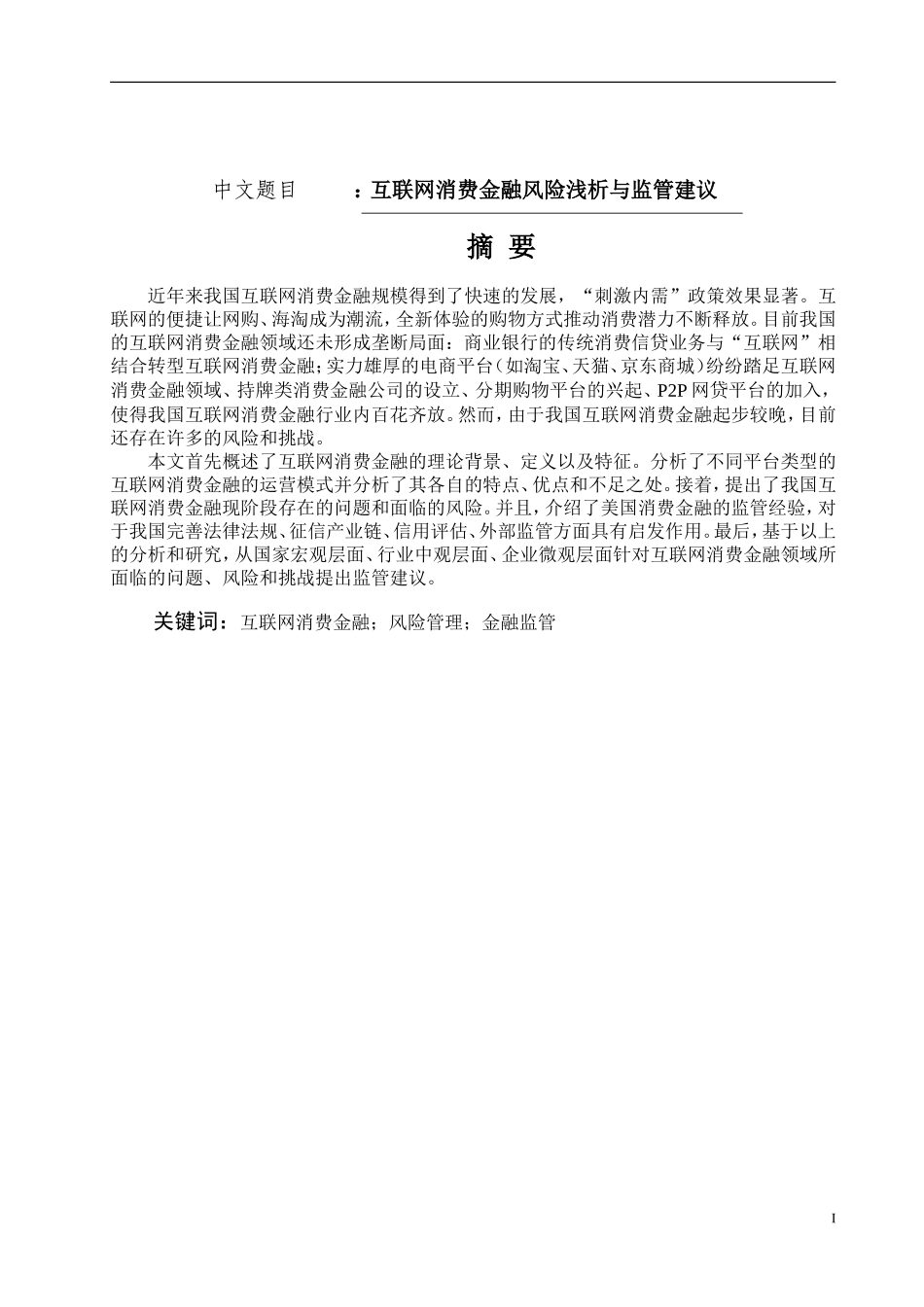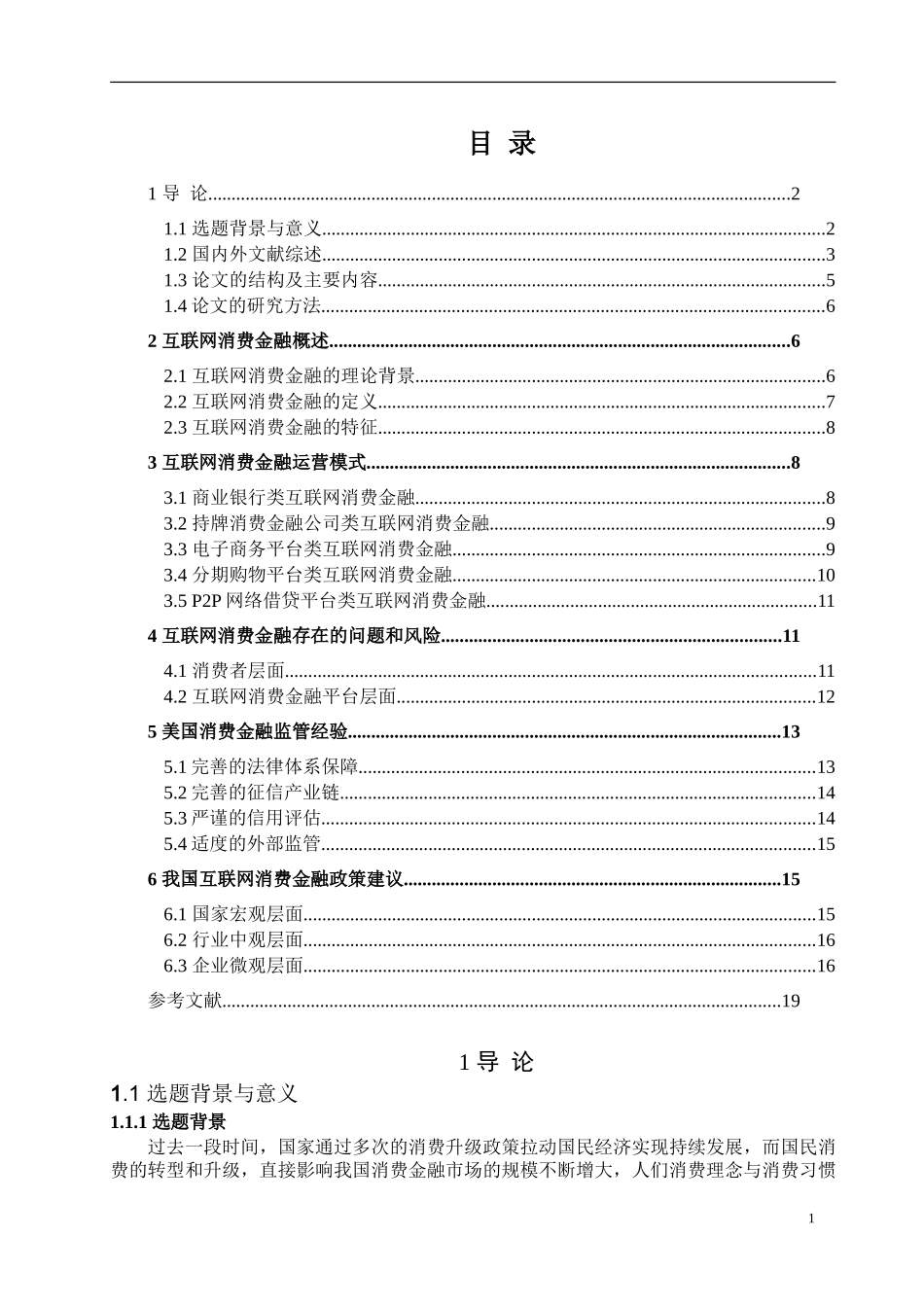中文题目:互联网消费金融风险浅析与监管建议摘 要近年来我国互联网消费金融规模得到了快速的发展,“刺激内需”政策效果显著。互联网的便捷让网购、海淘成为潮流,全新体验的购物方式推动消费潜力不断释放。目前我国的互联网消费金融领域还未形成垄断局面:商业银行的传统消费信贷业务与“互联网”相结合转型互联网消费金融;实力雄厚的电商平台(如淘宝、天猫、京东商城)纷纷踏足互联网消费金融领域、持牌类消费金融公司的设立、分期购物平台的兴起、P2P 网贷平台的加入,使得我国互联网消费金融行业内百花齐放。然而,由于我国互联网消费金融起步较晚,目前还存在许多的风险和挑战。本文首先概述了互联网消费金融的理论背景、定义以及特征。分析了不同平台类型的互联网消费金融的运营模式并分析了其各自的特点、优点和不足之处。接着,提出了我国互联网消费金融现阶段存在的问题和面临的风险。并且,介绍了美国消费金融的监管经验,对于我国完善法律法规、征信产业链、信用评估、外部监管方面具有启发作用。最后,基于以上的分析和研究,从国家宏观层面、行业中观层面、企业微观层面针对互联网消费金融领域所面临的问题、风险和挑战提出监管建议。关键词:互联网消费金融;风险管理;金融监管IAbstractIn recent years, the scale of China's Internet consumer finance has developed rapidly, and the policy of "stimulating domestic demand" has obvious effect. The convenience of the Internet makes online shopping and online shopping become the trend, and the new shopping experience promotes the continuous release of consumption potential. At present, there is no monopoly in the field of Internet consumer finance in China: the traditional consumer credit business of commercial banks is combined with the "Internet" to transform Internet consumer finance; powerful e-commerce platforms (such as Taobao, tmall, Jingdong Mall) have set foot in the field of Internet consumer finance, as well as the establishment of licensed consumer finance companies, the rise of staged shopping platforms, P With the joining of 2p online loan platform, the ...


